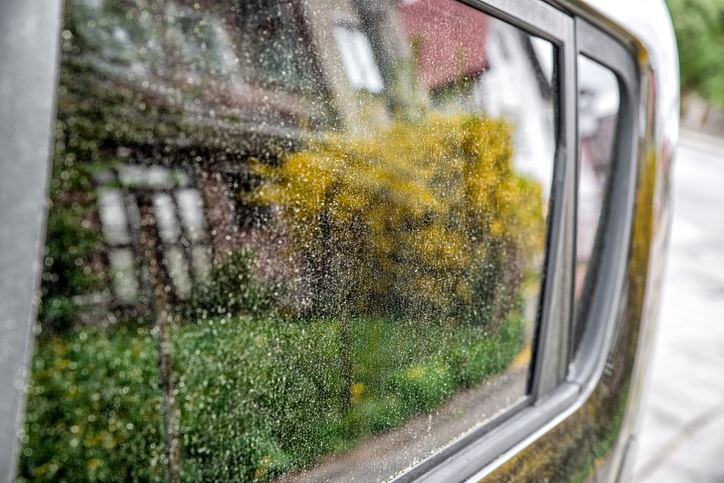
People with allergies do everything possible to avoid pollen. After all, it causes runny noses, watery eyes, sneezing, and more. However, pollen isn’t good for your vehicle as well. It doesn’t matter whether you drive an older car or a new one from Barker Buick GMC in Houma, Louisiana. Either way, you need to protect your vehicle from pollen.
What’s Pollen?
Pollen appears as a yellowish powder that travels from tree to tree and plant to plant. It does that thanks to help from the wind, birds, animals, and even insects. Overall, pollen’s a good thing since it helps to grow new trees and plants. However, for both allergy sufferers and car owners, it can cause real problems.
The structure of pollen consists of spiny, microscopic hooks. As a result, it latches on to anything it comes into contact with, including your vehicle. In addition, pollen contains acidity, which becomes damaging when mixed with water. In other words, you want to avoid parking your vehicle under a tree before or during rain.
How Does Pollen Damage Cars?
As mentioned, pollen attaches to everything. So, if it’s on your car, especially before or while it’s raining, you’ll end up with a sticky mess. It’s so sticky that simply trying to wipe it off won’t accomplish anything.
Because pollen’s acidic, it can easily corrode the clear coat on your vehicle. Once it breaks through to the paint, it can create stains. If you don’t take care of the problem quickly, you’ll likely need to have your entire vehicle repainted and clear-coated.
Ways to Protect Your Vehicle
To prevent pollen from damaging your vehicle, here are some helpful tips.
Avoid Trees
When it’s hot outside, and the sun’s beaming down on a parking lot, you probably look for a shady spot. Again, that’s never a good idea. After all, pollen from the tree will land directly on the surface of your vehicle. Although uncomfortable, it’s better to stay clear of parking spaces under or near trees.
Wash Your Car Thoroughly
Due to the stickiness of pollen, you want to use the right things to wash your car. For instance, fill a large sprayer with hot water and about one-quarter cup of Dawn dish soap. After spraying every inch of your vehicle, let it sit for roughly 10 to 15 minutes.
Known for cutting through stubborn grease, this brand works great to remove pollen. Next, wearing a soft cleaning mitt, begin to wipe the entire surface using circular motions.
With that complete, carefully rinse off your car. Follow that by drying it. However, you don’t want to use just any type of cloth. Rather, buy one or more microfiber towels. Especially when it comes to car paint, that’s critical. After all, the open spores in this type of towel grab dirt, dust, and pollen.
Also, you should consider applying quality car wax. Just make sure your vehicle’s completely dry. That way, it’ll have a layer of protection on top of the paint. For optimal protection, you could take your car to a reputable source to have it clear coated.
You might also like: Enjoy Donuts And Coffee At Mr. Ronnie’s
Don’t Overlook the Interior
Along with cleaning the exterior of your car, you’ll need to focus some attention on the interior. Even with the windows closed, tiny spores can make it inside the cabin. There, they’ll attach to the seats, doors, dashboard, and so on. While tedious work, you’ll need to go over every inch with a quality cleaning product.
In addition, be sure to have the cabin filter changed. Newer and new automobiles come with built-in filters, but during pollen season, they often need replacing. Now, if you drive an older car, you can have a filter installed. Another option is to head to Barker Buick GMC in Houma, Louisiana, to trade it in for a new ride.
Disclaimer: The stock image is being used for illustrative purposes only, and it is not a direct representation of the business, recipe, or activity listed. Any person depicted in the stock image is a model.
